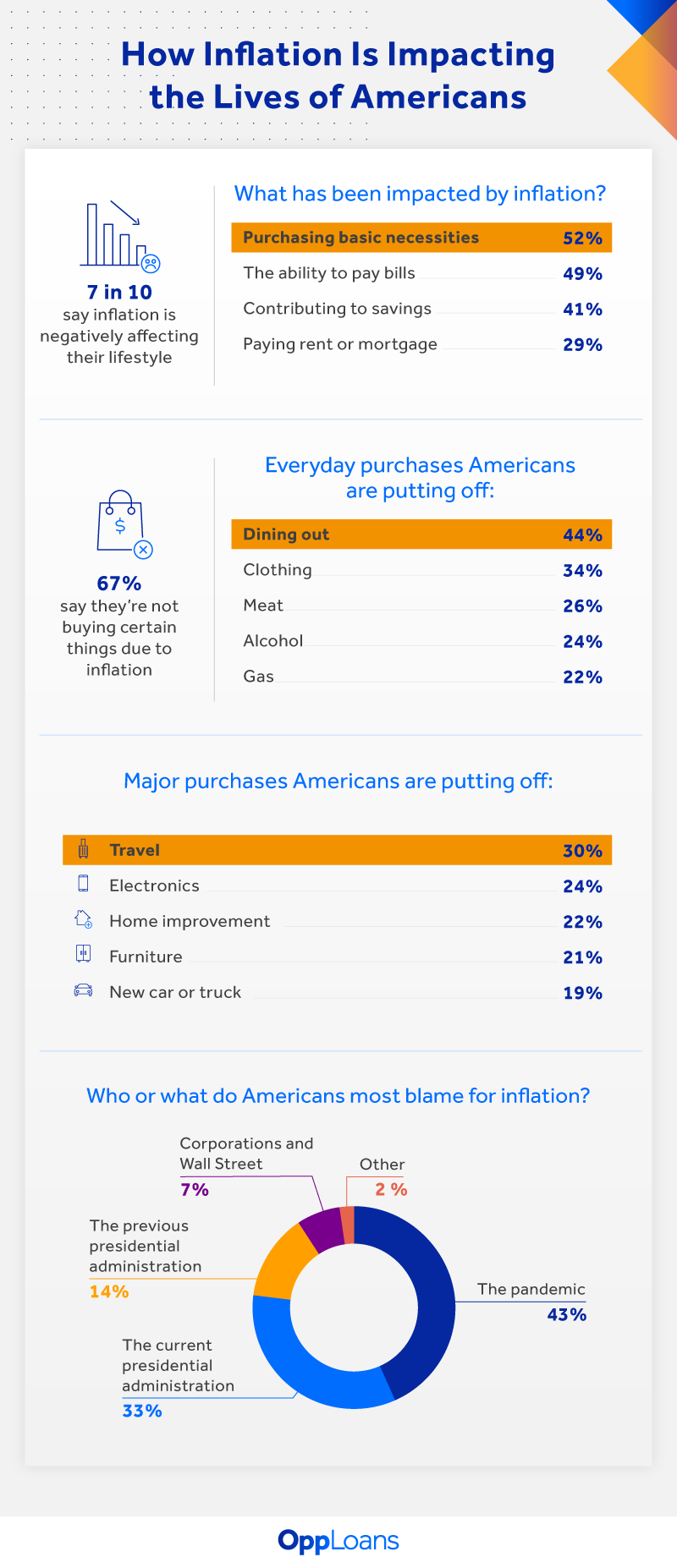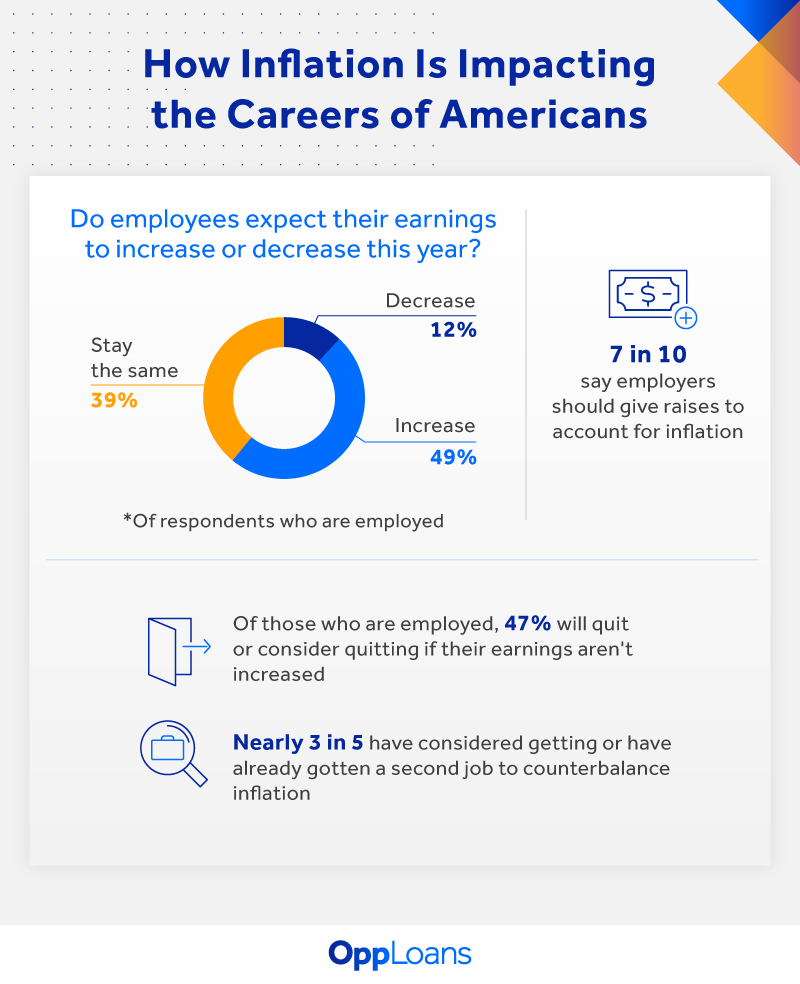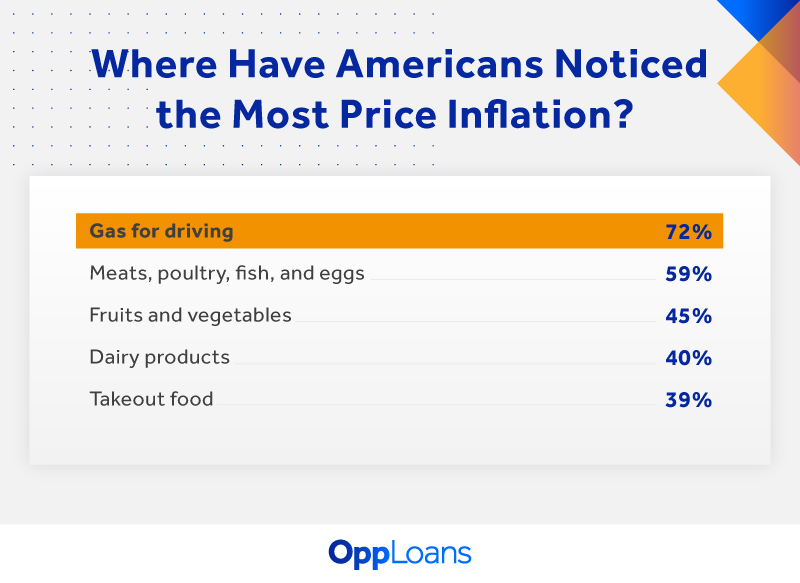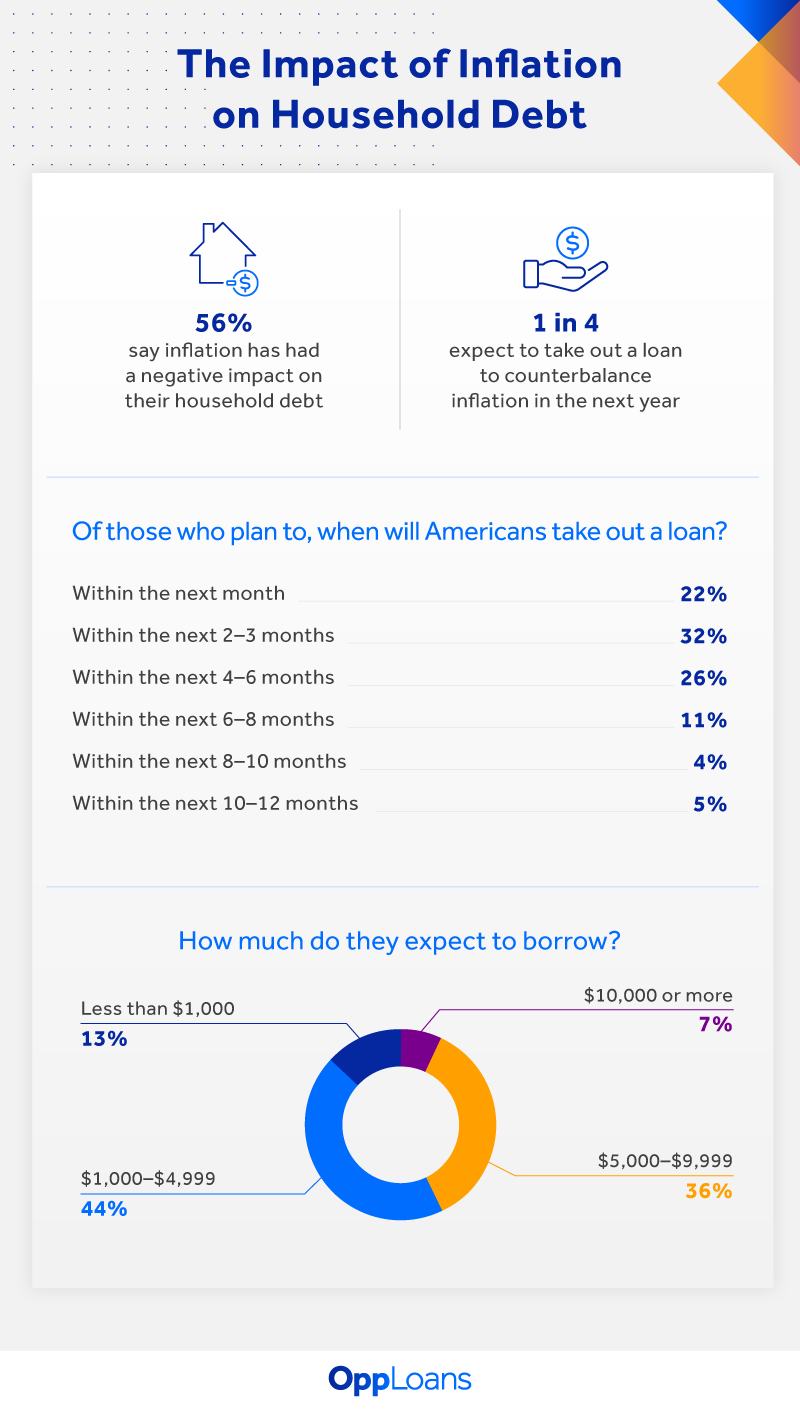Study: 7 in 10 Americans Say Inflation Is Negatively Impacting Their Lifestyle

Please note the below article contains links to external sites outside of OppU and Opportunity Financial, LLC. These sources, while vetted, are not affiliated with OppU. If you click on any of the links you will be sent to an external site with different terms and conditions that may differ from OppU’s policies. We recommend you do your own research before engaging in any products or services listed below. OppU is not a subject matter expert, nor does it assume responsibility if you decide to engage with any of these products or services.
Driven by rising gas and housing prices and supply shortages, U.S. inflation rose 8.5% for the year ended March 2022. Unsurprisingly, inflation had a real impact on daily life as prices for everything from pantry essentials to homes outpaced income. Many Americans felt the weight of inflation even after they saved and budgeted.
In 2022, we surveyed more than 1,000 Americans and gained insight into how inflation impacted their lives and how well they could judge where prices rose the most.
Key takeaways
- 7 in 10 said inflation negatively impacted their lifestyle, and nearly 70% did not buy things because of inflation.
- About half said that inflation impacted their ability to purchase everyday items and pay bills; almost one-third had trouble making rent or mortgage payments.
- Of those who were employed and didn’t expect a pay increase that year, nearly half would consider quitting if their earnings weren’t increased to counterbalance inflation.
How inflation impacted the lives of Americans
The majority of Americans in this study felt the squeeze of inflation, with 7 in 10 respondents saying it negatively impacted their lifestyle. About half reported that their ability to purchase basic items (52%) and pay bills (49%) was compromised. Almost a third of respondents (29%) had trouble making rent or paying their mortgages.
Inflation caused many people to put off everyday purchases. Many respondents cut everyday spending in categories such as dining out (44%), clothing (34%), and meat (26%).
Of course, the ability to make major purchases suffered as well, with 30% avoiding travel and another 24% putting off electronics such as computers and TVs.

Inflation created a more critical impact than just canceled travel plans. Nearly 1 in 5 (16%) of responders put off medical treatments because of rising costs, and 14% were forgoing medicine purchases to stay afloat.
For many, the cause of the surge in inflation came from two sources. Over 40% blamed the pandemic, and another 33% blamed the presidential administration.
Inflation also impacted careers
Although average pay rose 4.7% in 2021, higher consumer prices caused average real earnings to decrease. In short, people made more money, but their dollar didn’t go as far. Our survey respondents recognized this strain and said that businesses should do more for employees to offset the impact of inflation.
The majority of respondents (70%) said employers should give their employees a raise to account for inflation. Unfortunately, of those who were employed, nearly 2 in 5 said they expected their salaries to stay the same that year. To counterbalance inflation, almost 60% of respondents considered getting or have already gotten a second job or gig work.

A lack of salary increases proportional to inflation might have been the final straw for many. Nearly half of respondents (47%) admitted that they would quit or consider quitting their jobs if they didn’t receive a salary bump.
Where Americans noticed inflation the most
We wanted to understand where Americans saw the effects of inflation the most, so we asked them to pinpoint the price increase of everyday items such as food and alcohol. Then we compared their answers to data from the Consumer Price Index and FRED.
Interestingly, many consumers underestimated the rise in gas prices, which surged 40% between January 2021 and January 2022. Nearly 7 in 10 said gas prices rose less than 40%.
Likewise, meat prices rose more than 13% over the same period, but almost two-thirds of respondents believed the increase to be less. With meat purchases down as a whole over that past year, perhaps fewer eyes noticed the steady price increase.

Taking out loans to counterbalance inflation
As grim as it sounds, we as individuals can do little to combat inflation. Sound finances and spending cuts may help, but in the face of inflation, many may find their money reserves coming up short.
Over half of respondents (56%) saw a negative impact on their household debts as a result of inflation, and 25% expected to take out a loan to counterbalance inflation. Of those who planned on a loan, nearly 2 in 5 (36%) expected to need between $5,000 and $9,999.

More than just a buzzword or partisan talking point, inflation impacts lives every day. To lessen the impact of inflation, you can stay alert and be prepared. Seek out professional financial advice if you can or check out OppU’s Money Guide to find expenses you can trim down.
Most importantly, don’t just wait for conditions to change, do what you can to keep your finances strong. Start budgeting and saving now and create a financial safety net that can help protect you during times of inflation or uncertainty.
Methodology: OppLoans commissioned an online survey using SurveyMonkey to interview 1,097 Americans about their experience with inflation. The survey began on March 4, 2022, and concluded on March 5, 2022; 50% of respondents were male and 50% were female; 24% were 18–29, 27% were 30–44, 27% were 45–60, and 22% were older than 60. Each of the four census regions was equally represented.



